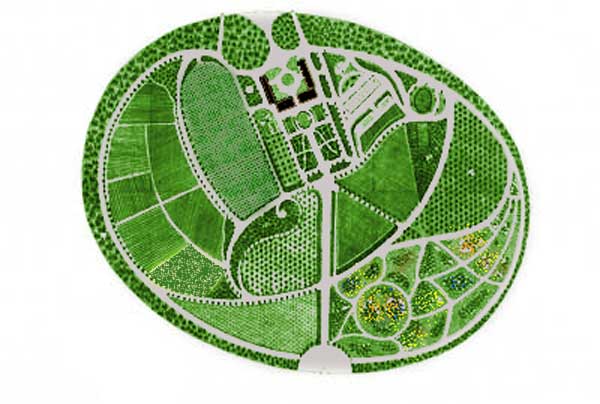
Colors by y. Haugen
On 31. July 1839, Anne Lister visited the Botanic Garden in Christiania (Oslo) and noted a list of plants that she found interesting. Many seem to have medicinal uses which seems typical for Anne Lister to notice …
Here is a run-through of the list and lots of links and images to give an extensive idea of what Anne tok note of during her time in the Botanic gardens.
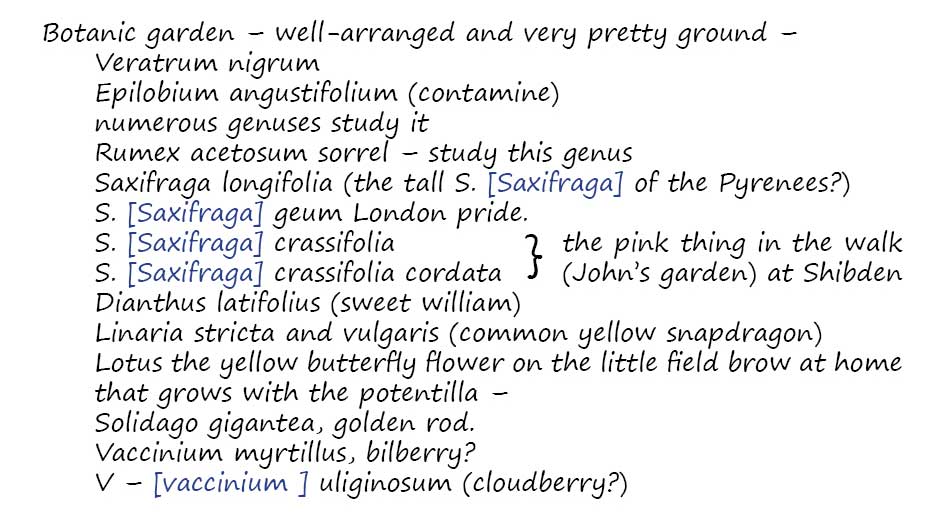
Veratrum nigrum – black false hellebore
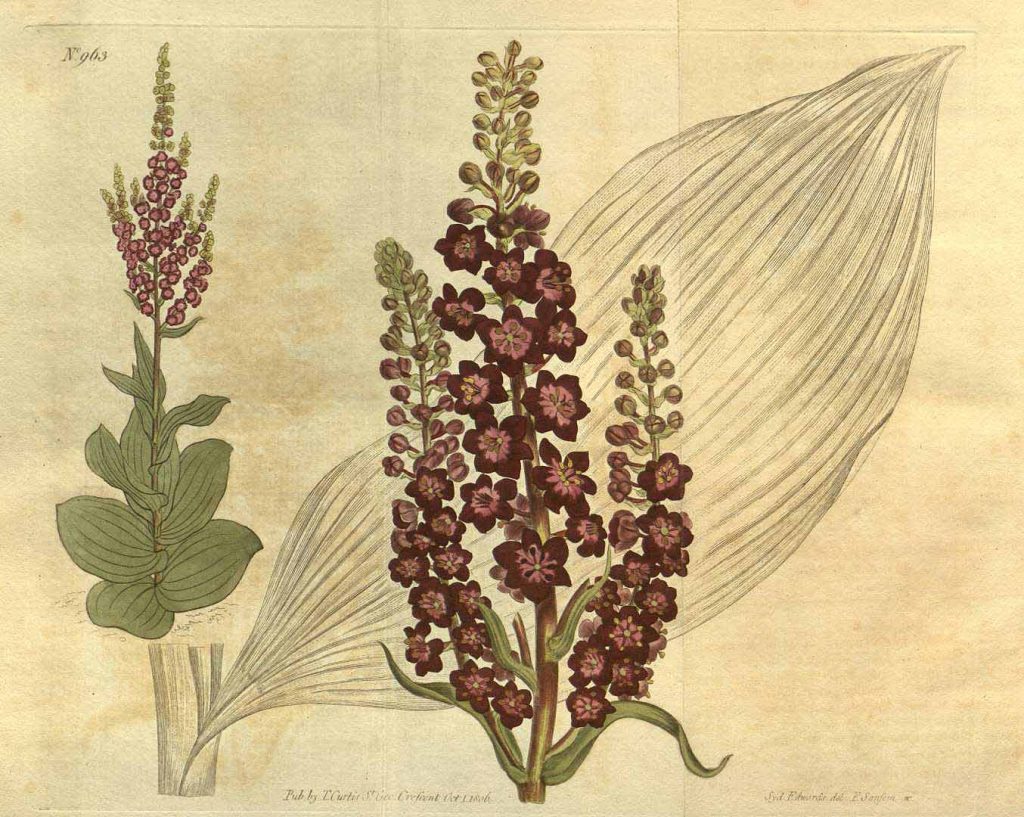
Veratrum nigrum was used as an ornamental plant in European gardens at least as far back as 1773. It was in common use in 1828, and Charles Darwin grew it in his garden in the 1840s.
This plant has medicinal use.
Read more…
Current location in the Oslo Botanical garden: Fjellhagen: Bed 9 (F-09) (Accession: F 1970-2047).
Epilobium angustifolium (contamine) – rosebay willowherb or fireweed
Anne’s comment: “study it”
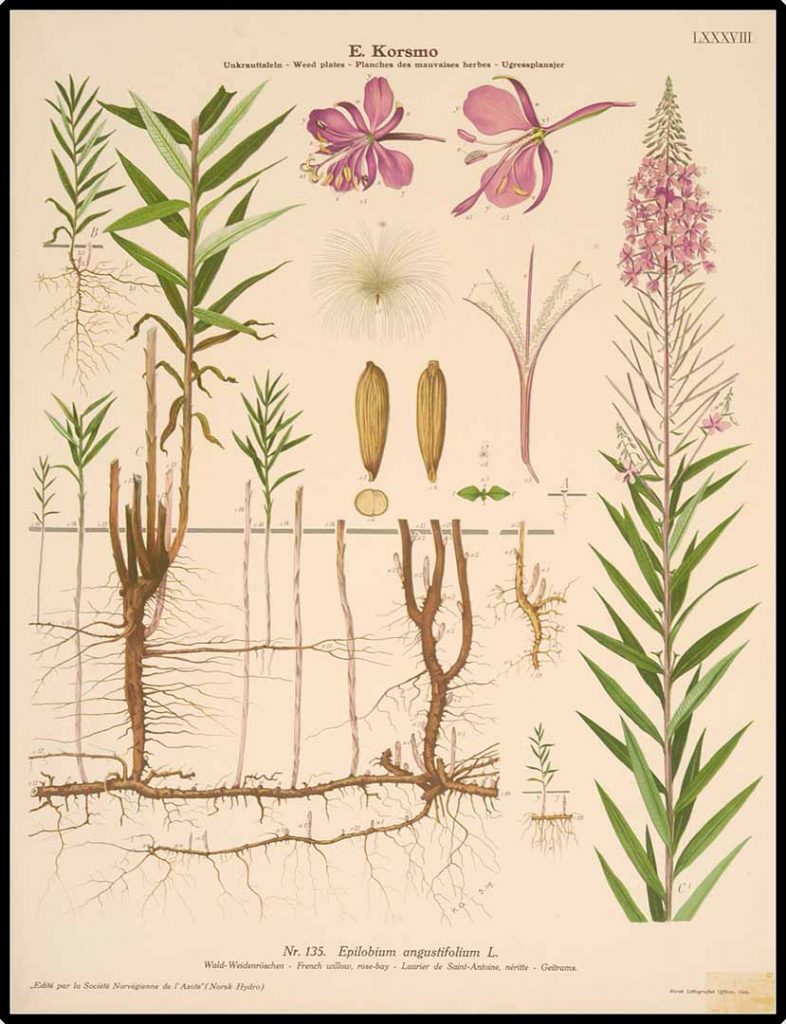
Chamaenerion angustifolium, known in North America as fireweed, in some parts of Canada as great willowherb, in Britain and Ireland as rosebay willowherb, and traditionally known as Saint Anthony’s Laurel amongst other variants, is a perennial herbaceous flowering plant in the willowherb family Onagraceae.
This plant has medicinal uses.
Current location in garden: Urtehagen: Temahagen 2 (UTEMA2) (Accession: U 2001-6022).
Rumex acetosum sorrel – Common sorrel, garden sorrel, sorrel
(Rumex acetosa var. serpentinicola)
Anne’s comment: “study this genus”
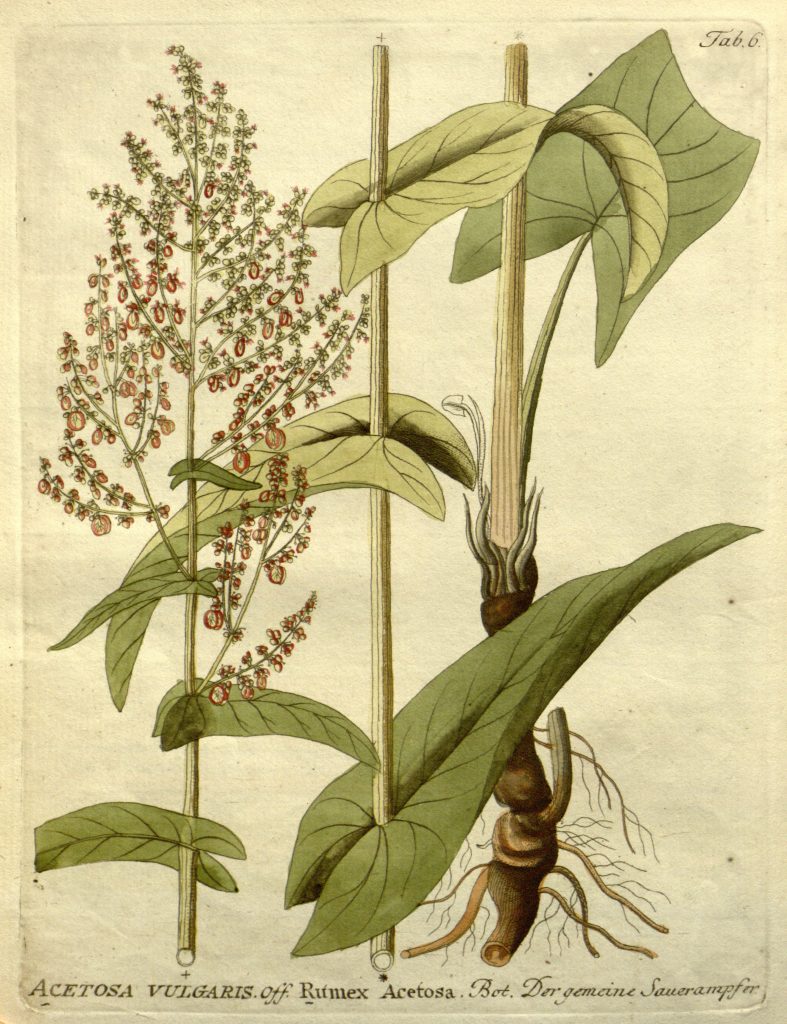
Common sorrel or garden sorrel (Rumex acetosa), often simply called sorrel, is a perennial herb in the family Polygonaceae. It is a common plant in grassland habitats and is cultivated as a garden herb or salad vegetable (pot herb).
Grown as a herb/ salad.
Read more…
Current location in garden: Fjellhagen: Skand.rygg serpentinitt (F-59_11) (Accession: SK 2015-653) Origin: Norway • Provenance: Wild and (Accession: SK 2015-788) Origin: Norway • Provenance: Wild
Saxifraga longifolia – Pyrenean saxifrage, long-leaved saxifrage
Anne’s comment: “the tall saxifraga of the Pyrenees?”
[Anne is of course right, this plant is indeed specific to the Pyrenees Read more…]
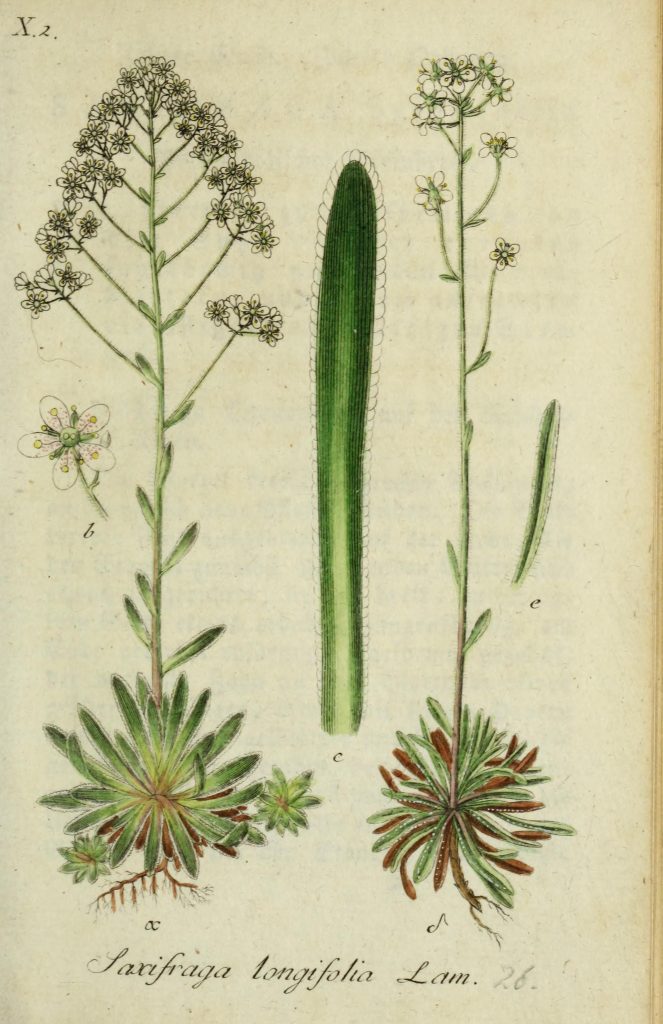
Saxifraga longifolia is an evergreen perennial typically forming a single rosette of linear, lime-encrusted, silver-grey leaves and one large, pyramidal panicle of numerous open cup-shaped, white flowers in summer.
Illustration from plantillustrations.org
Not currently in the gardens, but has S. Umbrosa listed as Pyrenean saxifrage and has three specimens of this currently.
Saxifraga geum, London pride
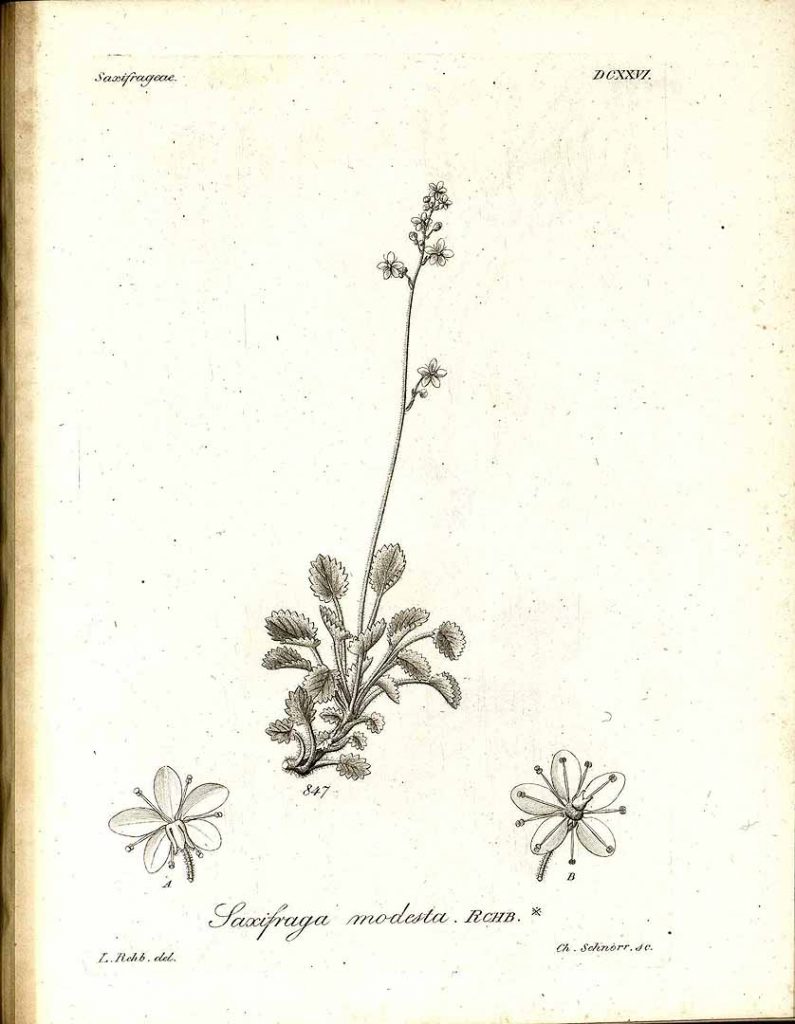
The “true” London pride is a hybrid between Saxifraga umbrosa, native to the Spanish Pyrenees, and Saxifraga spathularis
Illustration from plantillustrations.org
Current location in garden: Oldemors hage: Østfold (OLD-06) • Accession: O 2006-8007 • Provenance: Garden / Oldemors hage: Østfold (OLD-06) • Accession: O 2006-8124 • Provenance: Garden / Oldemors hage: Steinbed (OLD-15) • Accession: O 2008-8031 • Provenance: Garden
Saxifraga crassifolia – oval-leaved saxifrage, winter-blooming Bergenia
Saxifraga crassifolia cordata – heart-shaped leaves
Anne’s comment: “the pink thing in the walk (John’s garden) at Shibden”
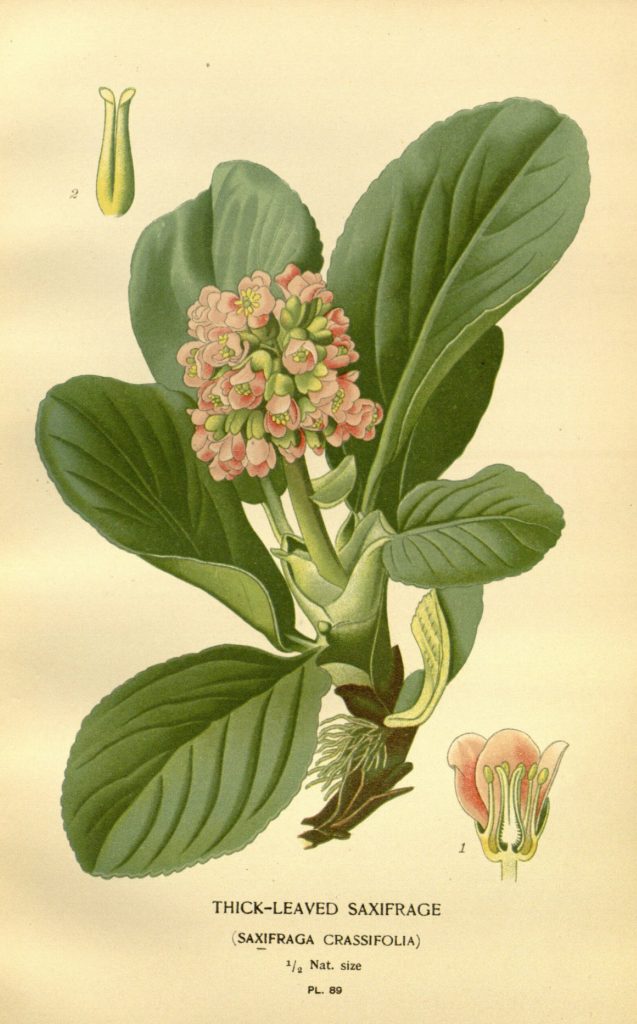
Saxifraga Crassifolia is now known as Bergenia crassifolia. Common names for the species include heart-leaved bergenia, heartleaf bergenia, leather bergenia, winter-blooming bergenia, elephant-ears, elephant’s ears, Korean elephant-ear, badan, pigsqueak, Siberian tea, and Mongolian tea.
Read more…
Illustration from plantillustrations.org
Current location in garden: 1: Fjellhagen: Bed 26 (F-26) • Accession: F 1967-673 • Provenance: Wild / 2: Oldemors hage: Østfold (OLD-06) • Accession: O 2007-8105 • Provenance: Garden
Dianthus latifolius (sweet william) – Carnation, pink
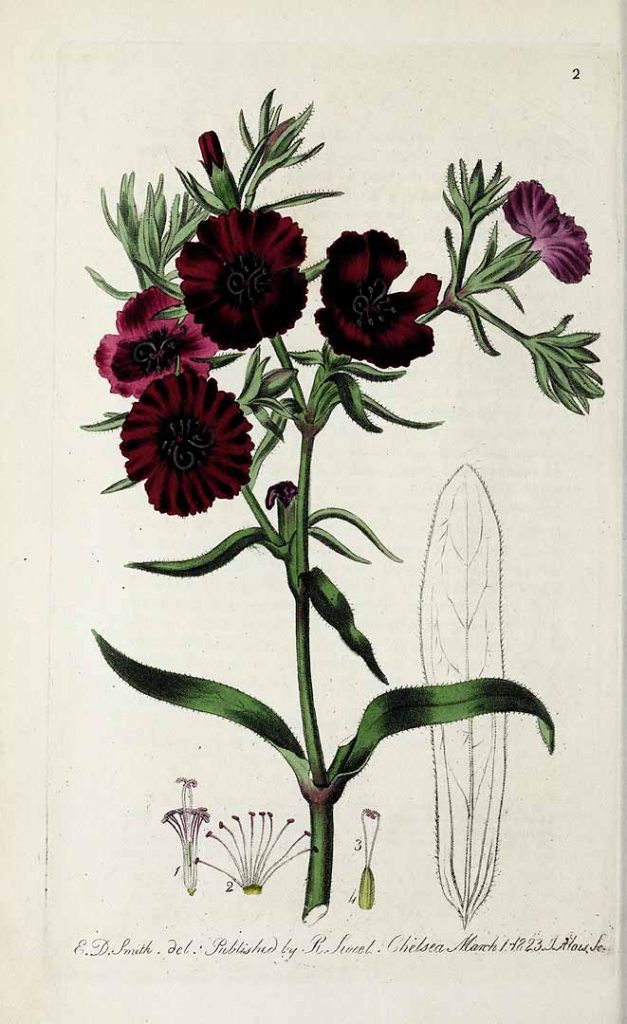
Currently known as Dianthus barbatus
Can have medicinal uses.
Illustration from plantillustrations.org
Location in current garden: 1: Oldemors hage: Gudbrandsdalen (OLD-11) • Accession: O 2008-8109 • Provenance: Garden / 2: Oldemors hage: Indre Østlandet øst (OLD-09) • Accession: O 2007-8128 • Provenance: Garden / 3: Oldemors hage: Oslo, Bærum, Asker, Nesodden vest (OLD-05) • Accession: O 2007-8151 • Provenance: Garden
Linaria stricta and vulgaris (common yellow snapdragon)
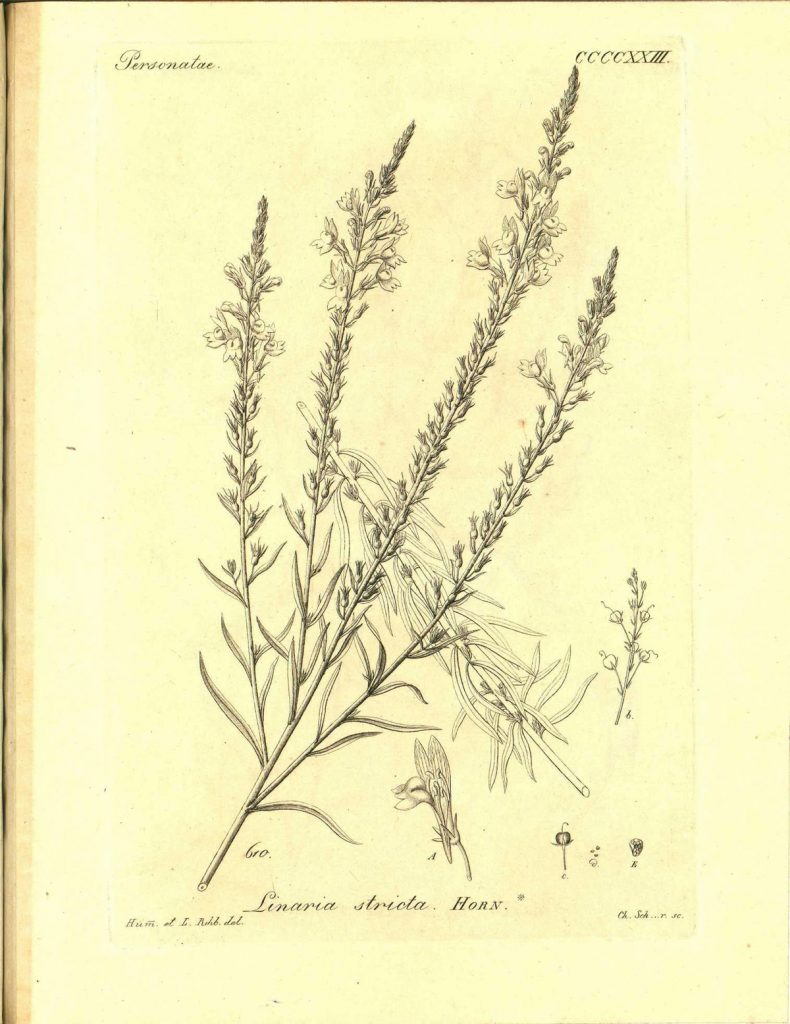
Not currently at the gardens
Lotus
Anne’s comment: “Lotus the yellow butterfly flower on the little field brow at home that grows with the potentilla”
[written in pencil, but not inked: “common yellow”]
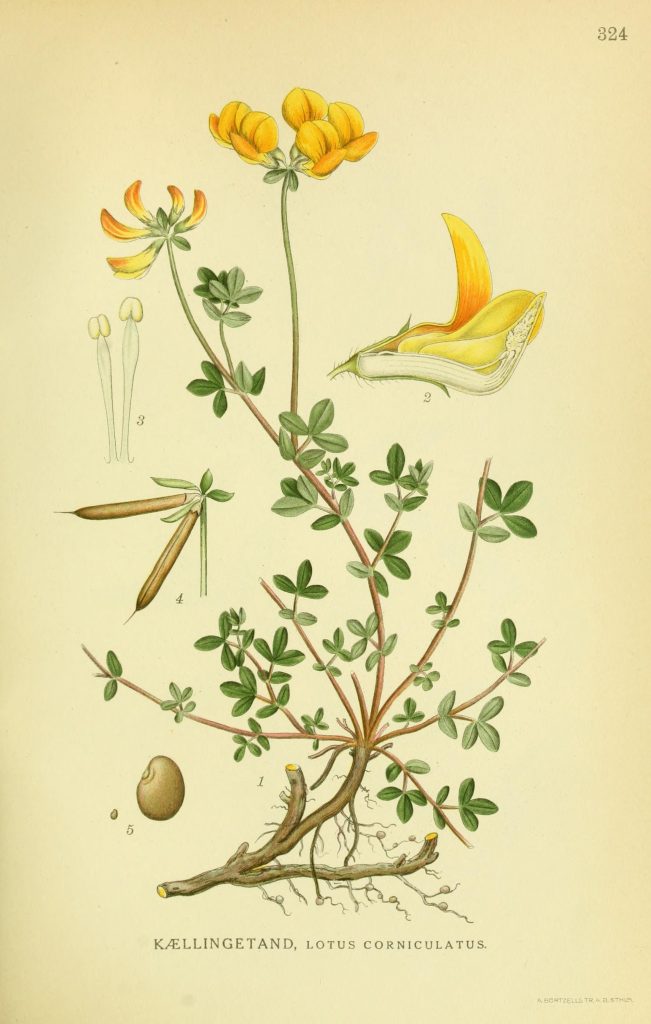
Lotus corniculatus, Bird’s-foot trefoil
The name ‘bird’s foot’ refers to the appearance of the seed pods on their stalk. Five leaflets are present, but with the central three held conspicuously above the others, hence the use of the name ‘trefoil’. It is often used as forage and is widely used as food for livestock due to its nonbloating properties.
Medicinal uses
Illustration from plantillustrations.org
Current location in the garden: 1: Fjellhagen: Skand.rygg marmor (F-59_03) • Accession: SK 2014-339 • Origin: Norway • Provenance: Wild / 2: Slåttemarka (SLÅ) • Accession: E 2013-880 • Origin: Norway • Provenance: Wild
Solidago gigantea, golden rod
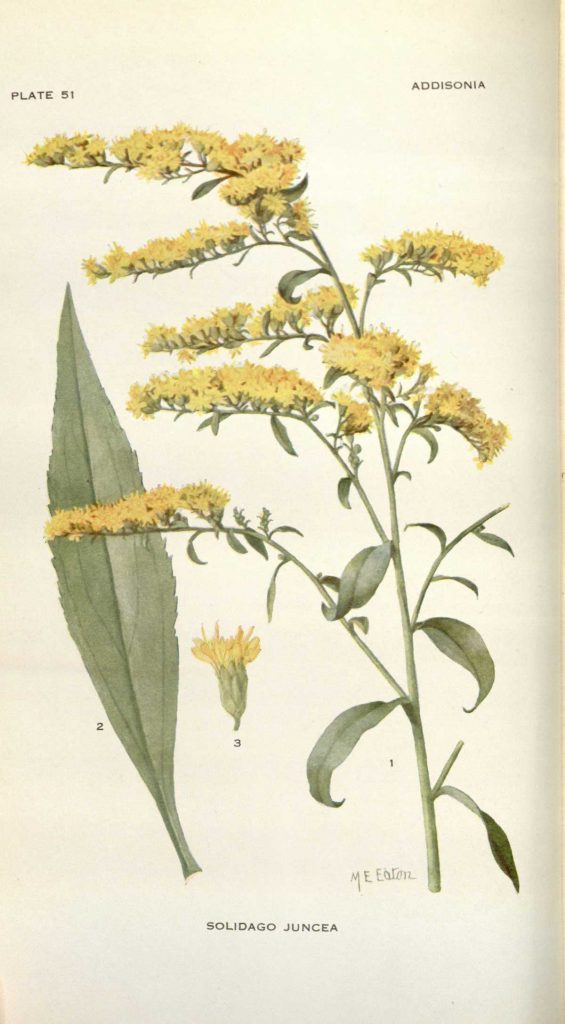
Solidago gigantea is a North American plant species in the sunflower family. Its common names include tall goldenrod and giant goldenrod among others. It is a widespread species Solidago gigantea is a herb up to 200 cm (80 inches) tall and is highly invasive throughout Europe and Asia.
Used as a dye
Illustration from plantillustrations.org
(NB! Solidago Juncea)
Not currently kept at the gardens, perhaps as it’s highly invasive.
Vaccinium myrtillus, bilberry – European blueberry
Anne’s comment: “Vaccinium myrtillus, bilberry?”
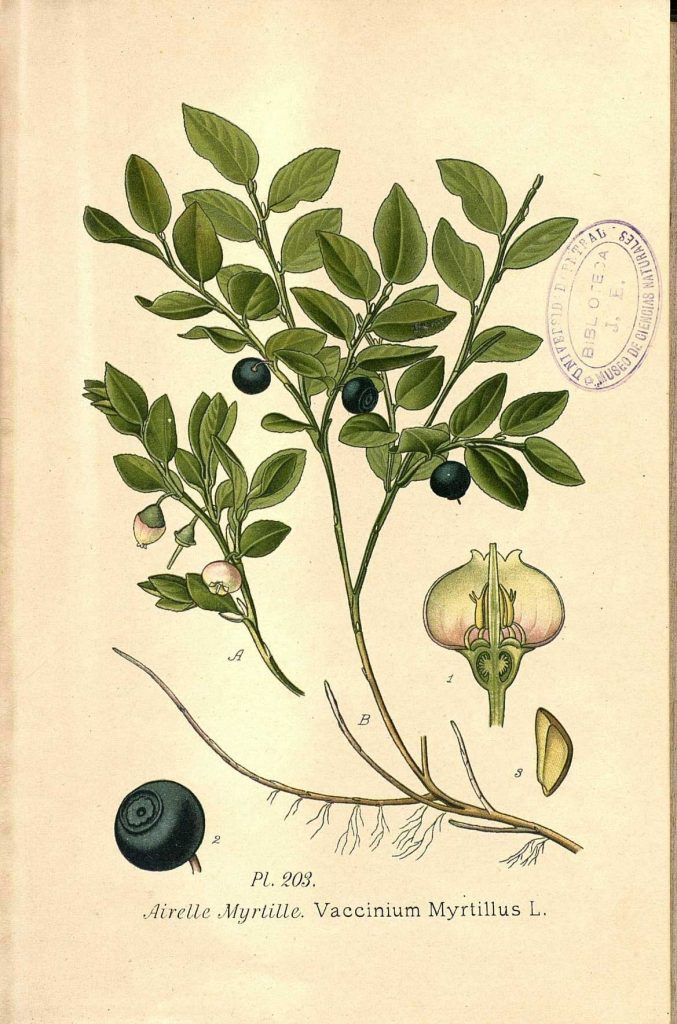
In cooking, the bilberry fruit is commonly used for pies, cakes, jams, muffins, cookies, sauces, syrups, juices, and candies.
Vaccinium myrtillus has been used for nearly 1,000 years in traditional European medicine. Vaccinium myrtillus fruits have been used in traditional Austrian medicine internally (directly or as tea or liqueur) for treatment of disorders of the gastrointestinal tract and diabetes.
Illustration from plantillustrations.org
Current location in garden: 1: Urtehagen: Temahagen 3 (UTEMA3) • Accession: U 2006-6282 / 2: Vikinghagen: Nordisk natur (VH-08) • Accession: VH 2014-646 • Origin: Norway • Provenance: Wild
Vaccinium uliginosum [Bog billberry not cloudberry]
Anne’s comment: “Vaccinium uliginosum (cloudberry?)”
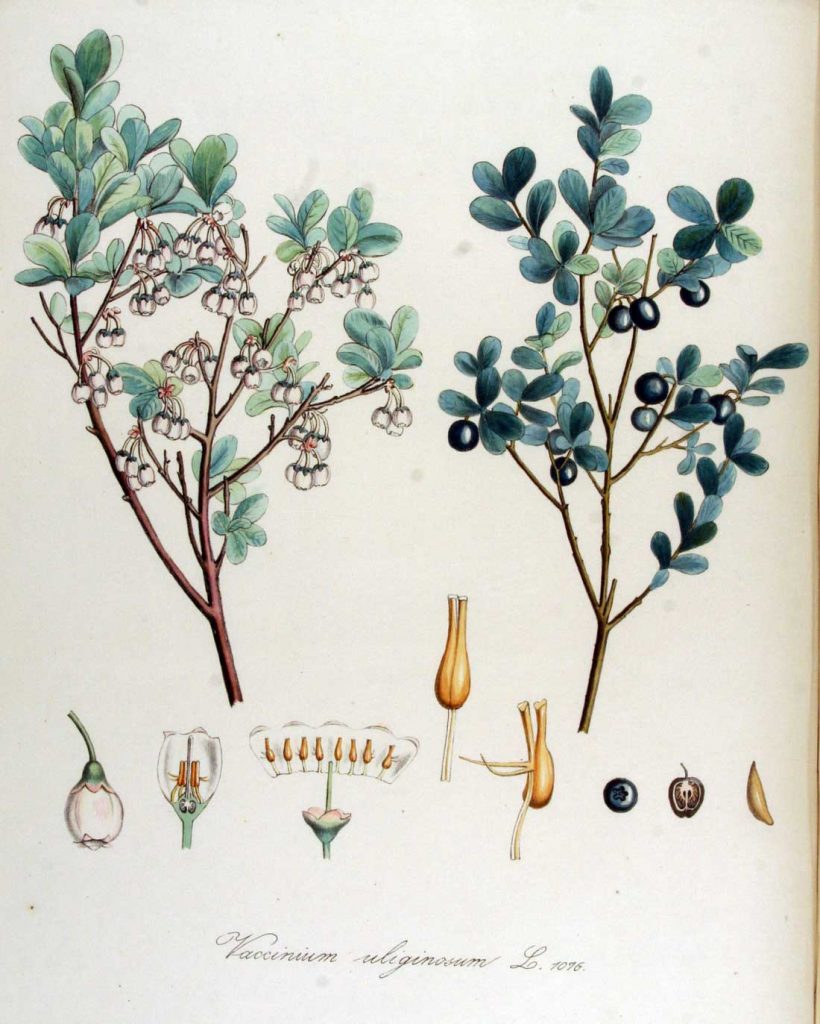
Vaccinium uliginosum is NOT cloudberry but bog bilberry, bog blueberry, northern bilberry or western blueberry. It is a Eurasian and North American flowering plant in the genus Vaccinium within the heath family.
In Korea, bog bilberry is used in infused liquor. In Siberia they use bog bilberries to make jam.
Illustration from plantillustrations.org
Current location in garden for v. uliginosum: 1: Vikinghagen: Nordisk natur (VH-08) • Accession: VH 2014-648 • Origin: Norway • Provenance: Wild
Cloudberries’ latin name is Rubus chamaemorus
– Anne Lister at Bolkesjø, August 4. 1839
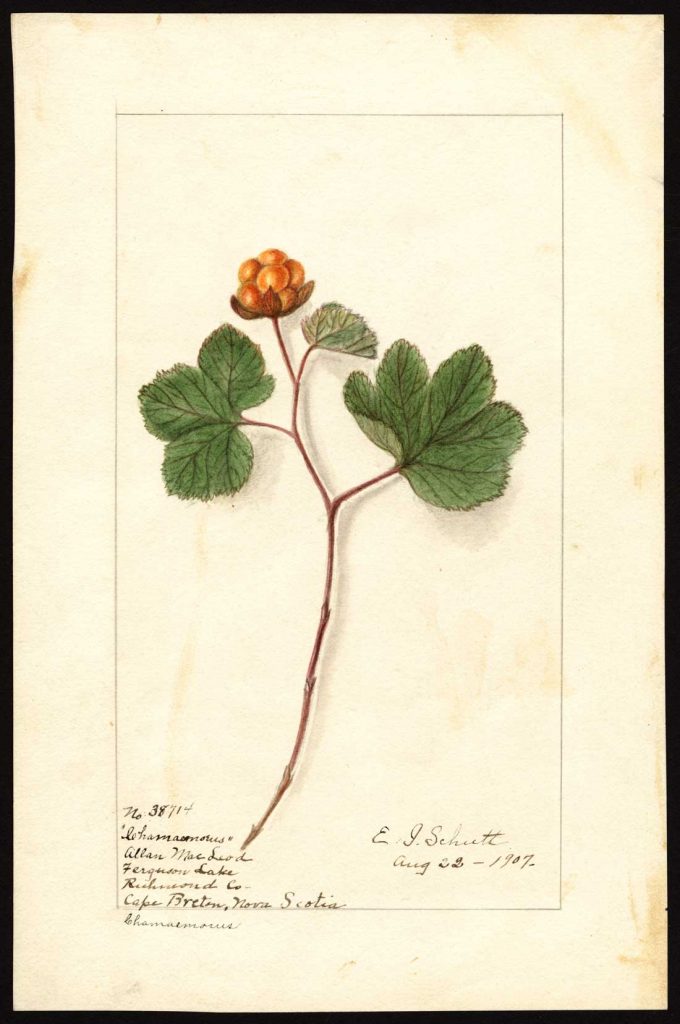
In Norway, cloudberries (multer) are either served with cream and sugar or mixed with whipped cream and sugar to be served as a dessert called multekrem (cloudberry cream), as a jam or as an ingredient in homemade ice cream. Cloudberry yoghurt – molte- or multeyoughurt, is a supermarket item in Norway.
Anne tries them during her stay at Bolkesjø (4. aug. 1839)
Illustration from plantillustrations.org
Current location in garden for Rubus chamaemorus (cloudberry): 1: Vikinghagen: Nordisk natur (VH-08) • Accession: VH 2014-649 • Origin: Norway • Provenance: Wild
Acknowledgements
A massive thank you to Kerry D Hudson for collating links for this presentation!